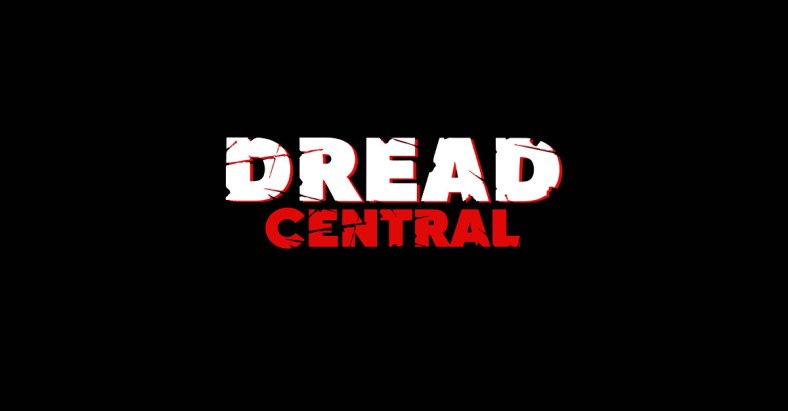The UK’s Miskatonic Institute of Horror Studies Teaching an I Am Legend Class This Week

 Since its original publication in 1954, Richard Matheson’s I Am Legend has gone on to become one of the most renowned and influential horror novels of all time. The book has also seen a ton of classic film adaptations, including The Last Man on Earth starring Vincent Price, The Omega Man with Charlton Heston, and the more recent version with Will Smith.
Since its original publication in 1954, Richard Matheson’s I Am Legend has gone on to become one of the most renowned and influential horror novels of all time. The book has also seen a ton of classic film adaptations, including The Last Man on Earth starring Vincent Price, The Omega Man with Charlton Heston, and the more recent version with Will Smith.
To celebrate the impact of Matheson’s book, Stacey Abbott, who is a Reader in Film and Television Studies at the University of Roehampton, will be delivering a talk called “The Legacy of Richard Matheson’s I Am Legend” at London’s Horse Hospital arts venue on Thursday, March 15, at 7pm. The talk will form part of the Miskatonic Institute of Horror Studies, an ongoing series dedicated to offering university-level history, theory, and production-based masterclasses relating to the horror genre. If you’d like to attend, you can get your tickets here.
In anticipation of the event, we decided to conduct a short interview with Abbott about what fans of I Am Legend can expect from her talk.
Dread Central: First and foremost, why do you think I Am Legend is a book worthy of continued discussion?
Stacey Abbott: I Am Legend is a timeless novel that raises important questions about what it means to be human and what it means to be a monster. It took the Gothic figure of the vampire hunter and revealed the everyday violence and horror within their actions by suggesting that perhaps the vampires had a point of view. While it was a product of its time — offering an apocalyptic vision within the context of Cold War, post-atomic bomb tensions — it also speaks to 21st Century anxieties with its apocalyptic vision and its focus upon the notion of a global pandemic.
DC: You probably get asked this a lot, but of all the official and unofficial film adaptations of the novel, which do you think is the best and why?
SA: I would say that the film that best captures Matheson’s vision remains Night of the Living Dead (as well as Romero’s subsequent Dead movies). While not an official adaptation, his zombie narrative captures Matheson’s claustrophobic siege narrative in which humans have to barricade themselves into a house surrounded by the living dead, desperately trying to break in and kill them. It is prepared to present the humans as morally questionable and fallible, and it captures Matheson’s focus upon the end of humanity and replacement by a new world order. What happens when humanity become the legend?
DC: Without revealing too much, can you talk a bit about Matheson’s own unproduced film script, which was rejected by the MPAA and the BBFC?
SA: It is a very faithful adaptation that captures the violence of his story. His script contained a brutality that did not sit well with the censors. They repeatedly refer to it as ‘gruesome’; and while not graphic by today’s standards, it is intensely physical in its descriptions. There are no fades to hide the violence. It was written to be up there on the screen.
DC: What can fans expect from your talk on March 15th?
SA: They can expect a lively discussion of the changing nature of horror cinema and Matheson’s place within that transition… with lots of fun clips.
“The Legacy of Richard Matheson’s I Am Legend” Synopsis:
Richard Matheson’s novel I Am Legend (1954) is a recognized classic of science fiction and horror. It has been adapted many times in films such as The Last Man on Earth (1964), The Omega Man (1971), and I Am Legend (2007). In 1958 Matheson wrote a script adapting the novel for Hammer Studios, but it was never filmed. The script was rejected by both the MPAA and the BBFC. In 1968 George Romero directed Night of the Living Dead, a film he admitted was inspired by Matheson’s novel, and this was the film that Matheson felt was most faithful to the themes of his book.
Through an analysis of a selection of official and unofficial adaptations of the novel, including Matheson’s own script, this lecture by Stacey Abbott considers how this text marks a key transformative moment within the evolution of the horror genre on film. It will consider how the novel reimagined the vampire film through the lens of science fiction and how Matheson’s adaptation for Hammer offered a new, more brutal and modern approach to horror than the studio’s Gothic adaptations of The Cure of Frankenstein (1957) and Dracula (1958). Abbott will discuss how the script confounded the censors in its approach to horror, signaling a cultural resistance to the modernization of the genre and a growing tension between filmmakers and arbiters of cinematic taste.
Finally, in this lecture Abbott will demonstrate not only how I Am Legend influenced Romero’s work, representing a key bridge between classic and new horror, but also continues to influence 21st Century filmmakers, particularly in the development of the vampire and zombie genres.
Categorized:News

